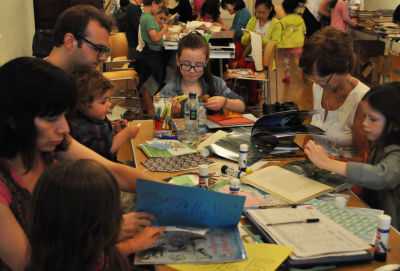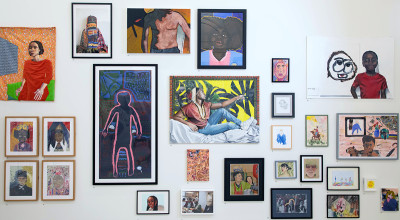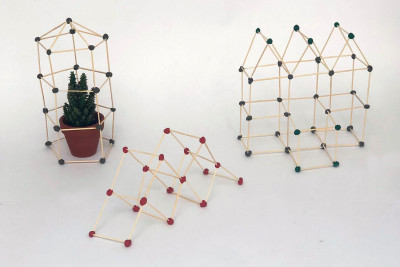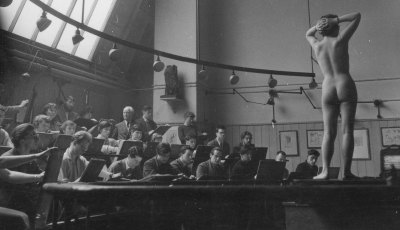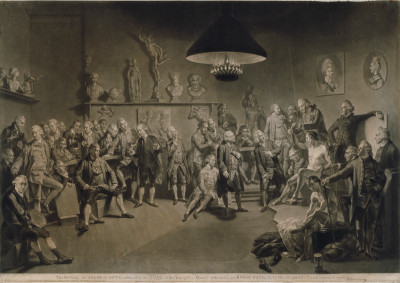Uncovering Beguiling Books
Uncovering Beguiling Books
By Anna Nunhofer
Published 19 July 2014
Ever wondered how we plan for our monthly Family Studios? Book artist Anna Nunhofer takes us behind the scenes of the Learning department as she prepared for July’s workshop ‘Beguiling Books’.
-
As you might guess, preparing for a Family Studio involves a lot of time, thought and people! We want our workshops to explore innovative art-making practices, and to encourage families to learn skills that they might not have tried before. My plans for this workshop started with a conversation with my colleague Gwen Ramsay, who runs the Family Studio programme. We were chatting in the Summer Exhibition about how artists’ books seem to feature every year now, often appearing in the form of altered books (books that have been changed by altering their appearance or meaning using methods such as folding, cutting, collaging and painting or drawing on the pages and cover). As a book artist myself, I like to make one-offs that are unique works of art. I choose found materials to work with, as this is not only resourceful, but also means that the materials can often lead to very interesting outcomes that you may never have initiated otherwise. So, I suppose the ultimate found material you start with in book arts is the book itself.
In a happy coincidence, at the same time as we were exploring these ideas, we were in discussion with a letterpress artist and typographic expert called Mr Smith, whom we discovered when he exhibited his work in ‘Crafted’ in Burlington Gardens (a showcase of British craftsmen), and we invited him to join the workshop, as the Family Studios are often so busy we need at least two activities to meet the demand. Gwen and I visited Mr Smith’s studio in Kennington, which is a veritable treasure trove of letters and presses, stacked ceiling high!
I wanted to include found materials, so I put a call out to friends and colleagues asking for used envelopes – which not many people realise have interesting patterns on the inside. We also asked for donations of unwanted books, and for several weeks my desk (when I could find it) resembled a stationery shop! We also received a donation of seven boxes of books from Any Amount of Books, a second-hand bookshop on Charing Cross Road. We made an emergency trip to Shepherds, a bookbinding shop where we found specialist equipment we needed, like paper and needles. Some people can feel nervous about working into an old book – they think they’re going to destroy it. In fact book arts can give new life to an old object, upcycling a book that otherwise may simply be left unopened on a dusty shelf or worse, end up in the bin. After a lot of preparation and trialling samples, the day itself was a great success! Over 200 children and their families turned up and got stuck in to the activities we had planned. First the kids chose their favourite books from the piles we had on offer – from old tomes with beautiful italic text, to children’s books, full of fun pictures.
-

Anna preparing for the studio

Materials laid out for the Studio

Letter blocks laid out, ready for printing

Looking at examples before the Studio begins

Selecting letter blocks

Families get to work

Cutting and sticking

All the family take part in our Studio sessions

Trying out prints

Mr Smith's letterpress in action

A finished book

Taking a look inside a finished book
-
Then they looked at some examples of our artists’ books (some we had made earlier) and very quickly got folding, cutting and drawing. Each one of their personally altered books looked amazing! In the final stage of the workshop, the families could then take their book into the adjacent room where Mr Smith and his team helped them to embellish their book covers using traditional letterpress printing techniques.
I am always amazed and inspired by the works of art that families create; they are so individual and they really engaged with the theme of the workshop with enthusiasm. I was so pleased to see that they embraced book arts in such a creative way, as it is a subject that not many people know about.






